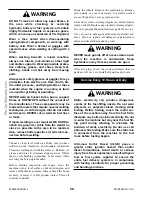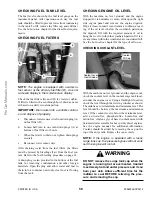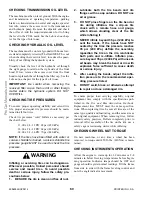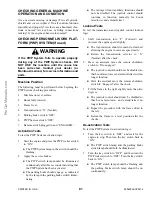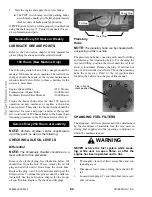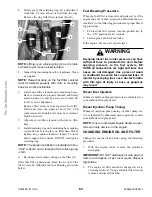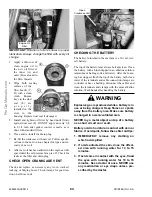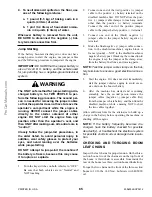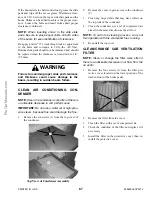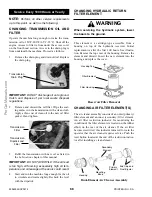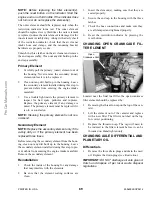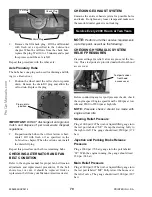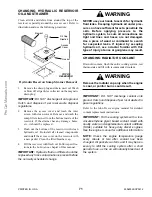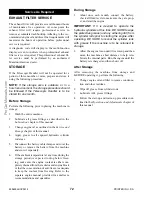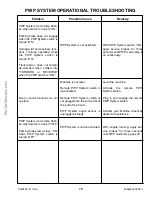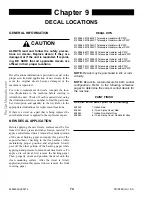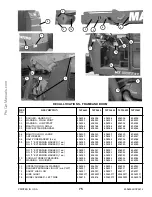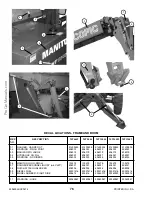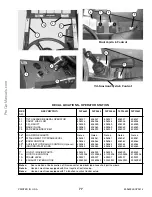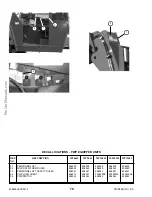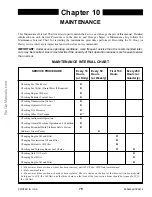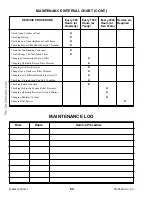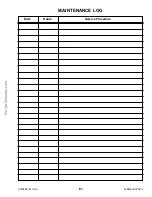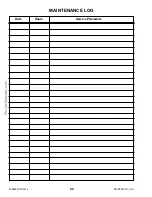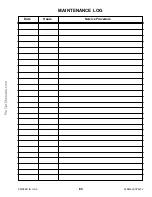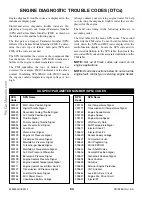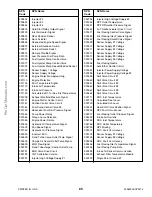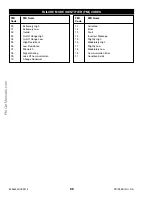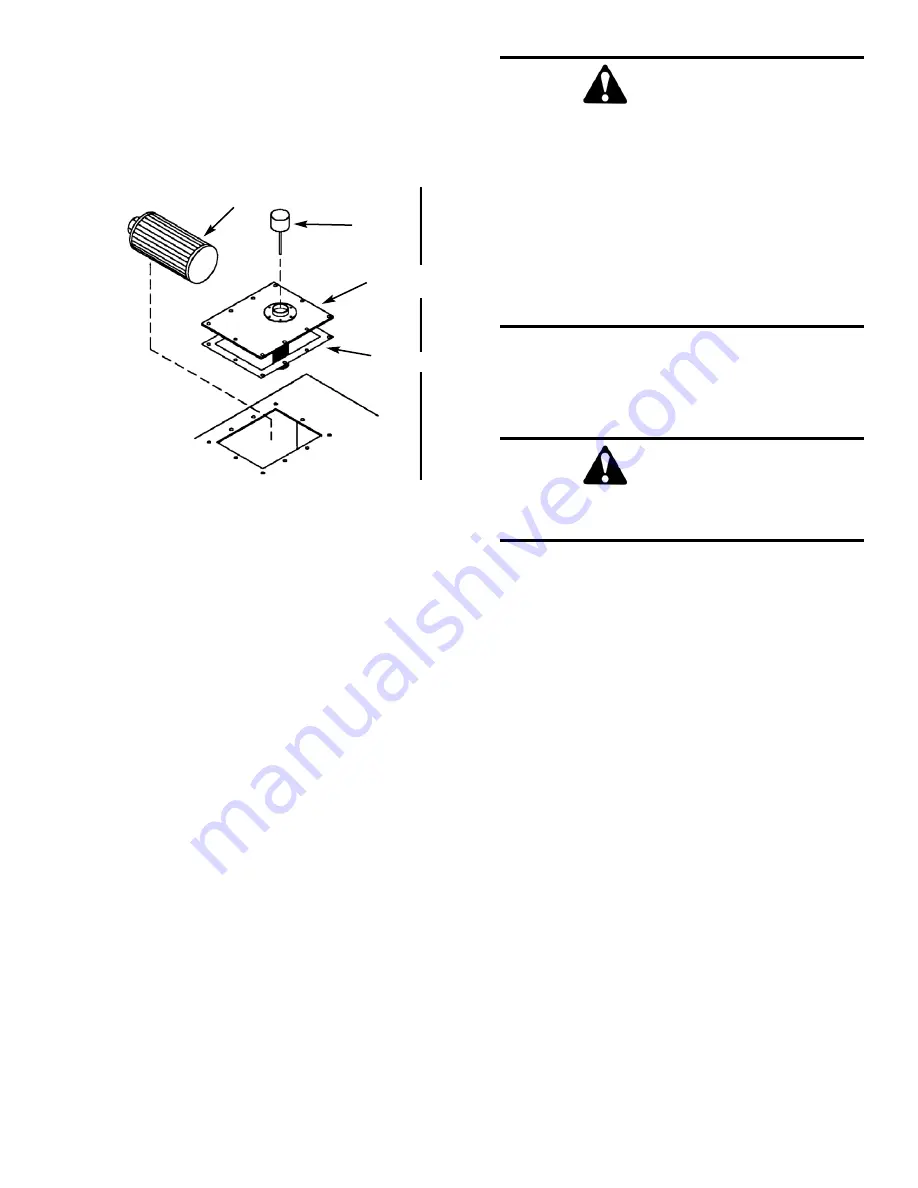
PRINTED IN U.S.A.
71
50960025/CP0514
CHANGING HYDRAULIC RESERVOIR
OIL AND STRAINER
Clean all dirt and debris from around the top of the
reservoir, especially around the access cover. Refer to
illustration and use the following procedure:
1.
Remove the drain plug and drain used oil. Wash
or blow off all particles collected on the magnetic
drain plug.
IMPORTANT:
DO NOT discharge oil onto ground.
Catch and dispose of per local waste disposal
regulations.
2.
Remove the access cover and wash the inlet
screen with clean solvent. Remove and wash the
sump filter strainer from the bottom inside of the
reservoir. If the strainer has any damage, holes,
etc., it should be replaced.
3.
Flush out the bottom of the reservoir with clean
hydraulic oil. Re-install all cleaned components
and install the access cover on the reservoir with
a new gasket. Clean the filter/breather cap.
4.
Fill the reservoir with fresh oil. Follow specifica-
tions in the
Lubrication
chapter of this manual.
IMPORTANT:
Hydraulic fluid and filters should be
replaced any time contamination is present before
the normally scheduled change.
CHANGING RADIATOR COOLANT
Drain old coolant, flush the entire cooling system, test
thermostats and fill with recommended coolant.
IMPORTANT:
DO NOT discharge coolant onto
ground. Catch and dispose of per local waste dis-
posal regulations.
Refer to the John Deere engine manual for detailed
coolant replacement instructions.
IMPORTANT:
Fill the cooling system with a low-
silicate ethylene glycol based coolant mixed with
quality water and supplemental coolant additives
(SCAs) suitable for heavy-duty diesel engines.
See the engine manual for additional information.
NOTE:
Check the engine temperature gauge
every minute or two after coolant has been
changed. Air pockets can form and it may be nec-
essary to refill the cooling system after a short
period of use, as the air will naturally bleed out of
the system.
WARNING
NEVER use your hands to search for hydraulic
fluid leaks. Escaping hydraulic oil under pres-
sure can have sufficient force to penetrate the
skin. Before applying pressure to the
hydraulic system, be sure all connections are
tight and lines and hoses are not damaged.
Use a piece of wood or cardboard to search
for suspected leaks. If injured by escaping
hydraulic oil, see a doctor familiar with this
type of injury at once or gangrene may result.
WARNING
Remove the radiator cap only when the engine
is cool, or painful burns could result.
Hydraulic Reservoir Sump Strainer Removal
Element
TOP OF
RESERVOIR
Gasket
Access
Cover
Fill Cap
Dipstick


